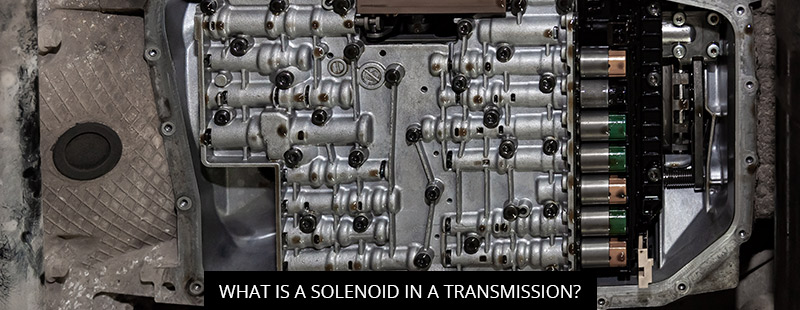



If you’ve been reading about transmissions, how they work, and about common problems, you’ve probably come across the term “solenoid”; but what does this mean?
If you want to know how the transmission works, it’s important to first understand that the transmission isn’t a single entity. It’s a collection of several different parts that all must work together to transfer power from the engine, through the drivetrain, to the wheels. If just one of these parts isn’t working properly, then the transmission can’t work properly. And, unfortunately, that malfunctioning part is often the solenoid.
A transmission solenoid is an electromechanical valve that controls the flow of transmission fluid into and through the transmission. In most transmissions today, the solenoid comes in a pack which is located in the transmission control unit, the transmission control module, or a transmission valve body. Transmission fluid is essential for a transmission to work properly. If the transmission fluid can’t flow as it’s supposed to, the transmission cannot function effectively, or in some cases, at all.
The transmission controller or computer powers the solenoid with an electrical current. The transmission computer sends out instructions to the individual solenoids in the pack. Then the solenoids direct transmission fluid to specific clutch packs or servo valves. This controls gear shifting, ensuring the transmission is responding according to the given driving conditions and engine requirements.
A solenoid body is usually made of steel. They have a cylindrical shape, a valve, and a return spring. The solenoid coil is a length of wire that wraps around a conductive component, acting as an electromagnet that controls the valve’s position.
A damaged or misfiring solenoid can cause a number of different transmission problems. A big one is problems with shifting. If you’re finding it difficult to shift gears, there’s a good chance that there’s something wrong with your solenoid pack. Electrical malfunctions can cause the solenoid to behave erratically, and this negatively affects shifting patterns.
In most cars today, an electrical or computerized problem should cause the Check Engine light to switch on. However, if the root of your problem is a mechanical failure, then it’s much less likely that your Check Engine light will turn on. Either way, you might experience a delay in shifting, a problem downshifting, or your transmission shifting into the wrong gear.
There’s no need to keep searching for solenoid problems or fixes. Just visit the Mister Transmission shop nearest you and we can figure out your issue. Please get in touch with us today to schedule a transmission inspection, maintenance service, or repair.




The evolution of transmissions has made these machines and systems increasingly complex. When transmission repairs are required, determining the cause and cure for what ails can be tricky.
Read More
At Mister Transmission we have access to leading-edge diagnostic equipment, enabling us to offer you the fastest and most accurate findings about what’s going on inside your vehicle’s transmission.
Read More
Just as you have other parts of your car serviced, your transmission needs maintenance to ensure a long life and avoid transmission problems.
Read More